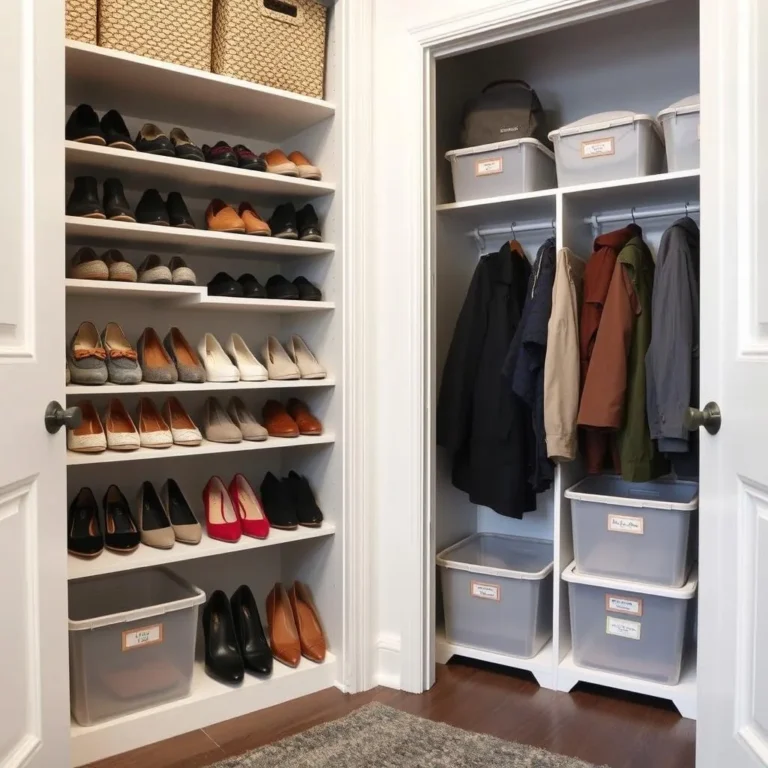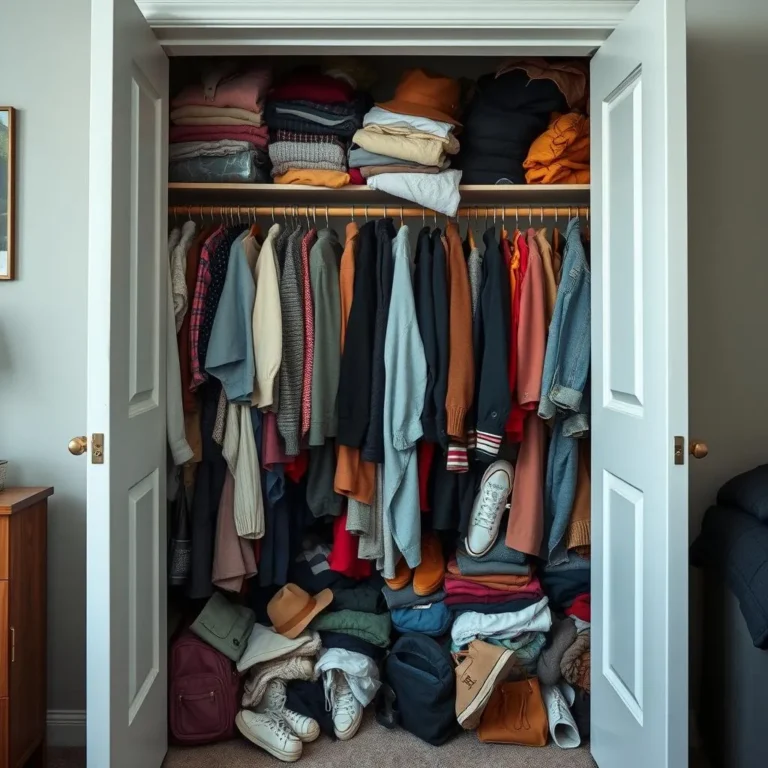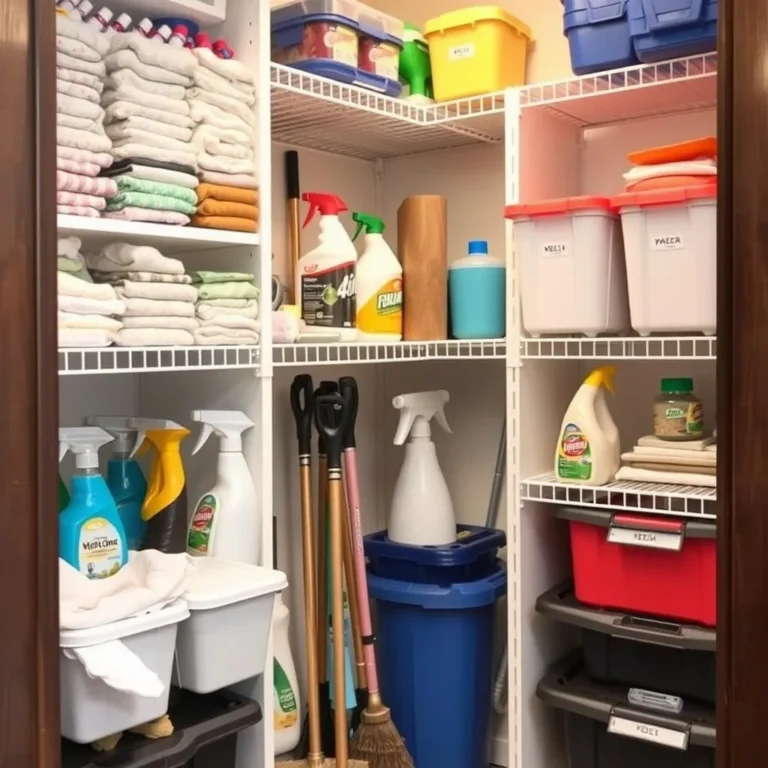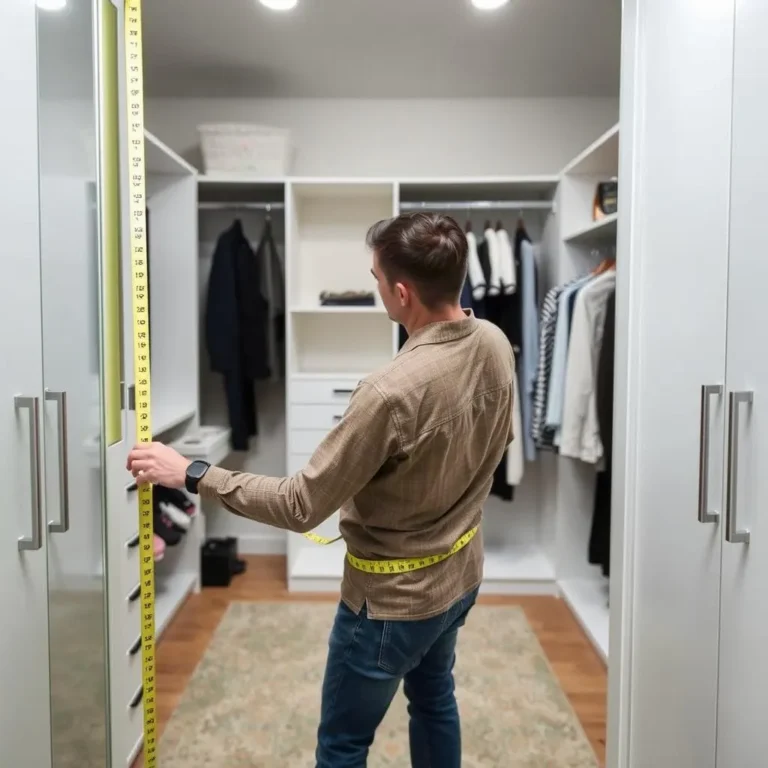Table of Contents
1. Introduction: The Long and Short of Long-Term Clothing Storage
2. Assessing Your Wardrobe: What Needs Storing?
2.1. Identifying Seasonal Items
2.2. Sentimental Garments: To Store or Not to Store?
2.3. The Importance of Cleaning Before Storage
3. Choosing the Right Storage Containers: A Material World
3.1. Plastic Storage Bins: The Pros and Cons
3.2. Vacuum-Sealed Bags: Space-Saving Solutions
3.3. Fabric Storage Bags: Breathable Options
3.4. Cedar Chests: A Classic Choice
4. Optimizing Your Storage Space: Maximizing Efficiency
4.1. Folding vs. Rolling: The Great Debate
4.2. Utilizing Vertical Space: Shelving and Hanging
4.3. Organizing by Category and Season
5. Protecting Your Clothes from Pests and Damage
5.1. The Threat of Moths and Other Pests
5.2. Using Cedar, Lavender, or Repellent Sachets
5.3. Proper Ventilation to Prevent Mildew
6. Storing Specific Types of Clothing: Specialized Care
6.1. Delicate Fabrics: Silk, Lace, and Linen
6.2. Leather and Suede: Maintaining Their Shape
6.3. Knitwear: Preventing Stretching and Damage
7. The Climate Factor: Temperature and Humidity Control
7.1. Ideal Storage Environments
7.2. Avoiding Extreme Temperatures and Humidity
8. Long-Term Storage Location: The Perfect Spot
8.1. Choosing a Cool, Dry, and Dark Place
8.2. Protecting Against Moisture and Light
9. Regular Inspections: Maintenance is Key
9.1. Checking for Pests and Damage
9.2. Airing Out Clothes Periodically
10. When to Let Go: Decluttering and Donating
11. The Cost Factor: Budget-Friendly Solutions
12. DIY Storage Solutions: Getting Creative
13. Professional Storage Options: For the Overwhelmed
14. Sustainable Storage Practices: Eco-Friendly Choices
15. Conclusion: Keeping Your Clothes in Tip-Top Shape
Best Way to Store Clothes Long Term
1. Introduction: The Long and Short of Long-Term Clothing Storage
So, you’ve got a closet bursting at the seams, or maybe you’re facing a seasonal wardrobe shift. Whatever the reason, you need to store clothes long-term. But how do you do it right without ending up with a pile of moth-eaten, wrinkled disasters? This comprehensive guide will walk you through the best practices for storing your clothes, keeping them pristine and ready to wear for months or even years to come. Think of it as your ultimate guide to clothing preservation!
2. Assessing Your Wardrobe: What Needs Storing?
Before diving into containers and strategies, let’s tackle the first step: inventory. What clothes are actually going into long-term storage?
2.1. Identifying Seasonal Items
This is the low-hanging fruit. Summer dresses in winter? Winter coats in summer? Those are your prime candidates for storage. But don’t just toss everything in a bin!
2.2. Sentimental Garments: To Store or Not to Store?
That prom dress, your grandfather’s old sweater – sentimental items often find their way into long-term storage. Ask yourself honestly: Will you ever wear it again? If not, consider alternatives like display or donation.
2.3. The Importance of Cleaning Before Storage
This is crucial! Store clean clothes only. Food stains, sweat, and body oils attract pests and can damage fabrics. Wash, dry-clean, or spot-clean everything before packing it away. 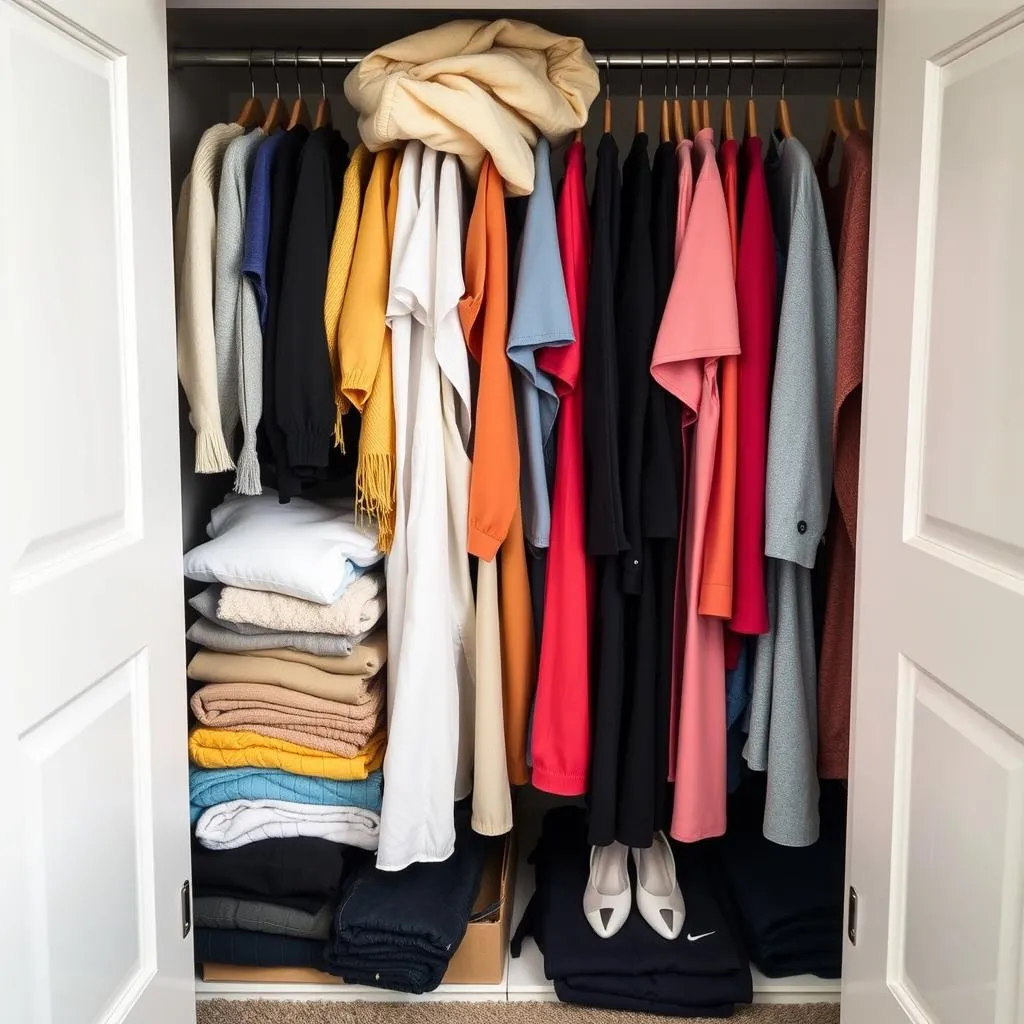
3. Choosing the Right Storage Containers: A Material World
The container you choose significantly impacts the longevity of your clothes. Let’s explore your options.
3.1. Plastic Storage Bins: The Pros and Cons
Durable and inexpensive, plastic bins are a popular choice. However, they lack breathability, which can lead to mildew if not used properly.
3.2. Vacuum-Sealed Bags: Space-Saving Solutions
These bags remove air, minimizing space and protecting against pests. But, be cautious; some delicate fabrics might not tolerate the compression.
3.3. Fabric Storage Bags: Breathable Options
Made from breathable materials like cotton or canvas, these bags offer protection while allowing air circulation. They’re ideal for items susceptible to mildew.
3.4. Cedar Chests: A Classic Choice
Cedar chests are naturally pest-repellent, adding an extra layer of protection. However, they can be expensive and might not be practical for large wardrobes. 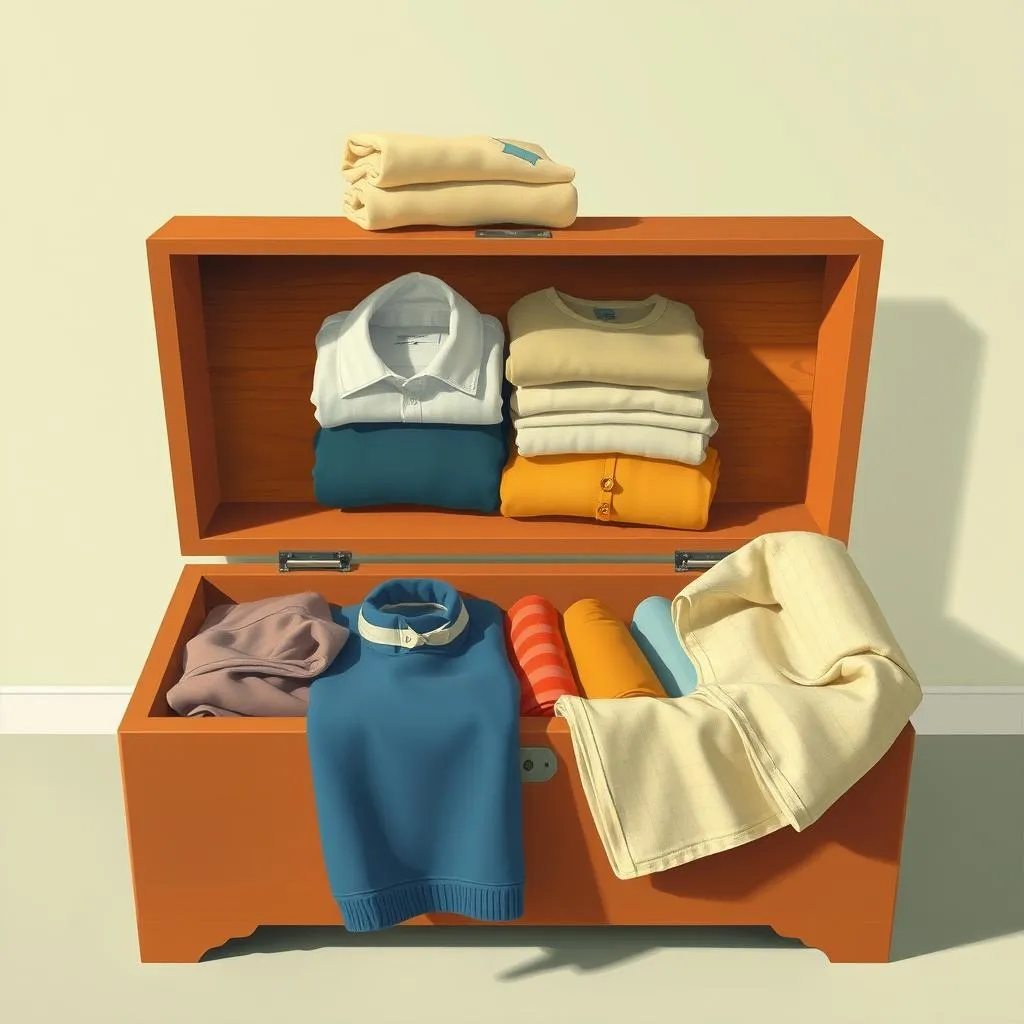
4. Optimizing Your Storage Space: Maximizing Efficiency
Storage space is precious. Let’s maximize it.
4.1. Folding vs. Rolling: The Great Debate
Rolling clothes saves space, especially for t-shirts and jeans. Folding is better for delicate items to avoid creases.
4.2. Utilizing Vertical Space: Shelving and Hanging
Think upwards! Shelving and hanging maximize vertical space, keeping clothes organized and accessible.
4.3. Organizing by Category and Season
Categorize items logically. Group summer clothes together, winter clothes separately, and so on. This makes finding things easy later.
5. Protecting Your Clothes from Pests and Damage
Pests are the enemy of long-term storage. Here’s how to fight back.
5.1. The Threat of Moths and Other Pests
Moths, silverfish, and other insects can wreak havoc on your clothes.
5.2. Using Cedar, Lavender, or Repellent Sachets
Natural pest deterrents like cedar and lavender can keep these pests at bay.
5.3. Proper Ventilation to Prevent Mildew
Ensure good air circulation to prevent the growth of mildew, particularly in humid environments.
6. Storing Specific Types of Clothing: Specialized Care
Different clothes need different treatment.
6.1. Delicate Fabrics: Silk, Lace, and Linen
These fabrics require extra care, often needing to be stored folded in acid-free tissue paper.
6.2. Leather and Suede: Maintaining Their Shape
Leather and suede should be stored in dust bags and in a cool, dry place.
6.3. Knitwear: Preventing Stretching and Damage
Knitwear should be folded loosely to prevent stretching and damage.
7. The Climate Factor: Temperature and Humidity Control
Climate plays a vital role.
7.1. Ideal Storage Environments
Cool, dry, and dark environments are ideal for long-term storage.
7.2. Avoiding Extreme Temperatures and Humidity
Extreme temperatures and humidity can damage clothes.
8. Long-Term Storage Location: The Perfect Spot
Where should you store your clothes?
8.1. Choosing a Cool, Dry, and Dark Place
Attics and basements are often unsuitable due to temperature fluctuations.
8.2. Protecting Against Moisture and Light
Moisture and light can fade and damage clothes.
9. Regular Inspections: Maintenance is Key
Don’t forget regular check-ups.
9.1. Checking for Pests and Damage
Periodic inspections can catch pest infestations early.
9.2. Airing Out Clothes Periodically
Airing out clothes periodically prevents mustiness.
10. When to Let Go: Decluttering and Donating
Be honest: Do you really need to keep everything? Decluttering and donating unused clothes frees up space.
11. The Cost Factor: Budget-Friendly Solutions
You don’t need expensive solutions. Repurposed boxes and bags work just as well.
12. DIY Storage Solutions: Getting Creative
Get crafty! DIY solutions can save money and add a personal touch.
13. Professional Storage Options: For the Overwhelmed
Professional storage might be the answer if you’re overwhelmed.
14. Sustainable Storage Practices: Eco-Friendly Choices
Consider reusable, recyclable, and sustainable storage solutions.
15. Conclusion: Keeping Your Clothes in Tip-Top Shape
Storing clothes long-term doesn’t have to be a daunting task. By following these steps and choosing the right approach for your wardrobe and lifestyle, you can preserve your beloved garments and ensure they’re ready to be worn again, whenever the time comes. Happy storing!
FAQs
1. Can I store clothes in a basement? Basements are generally not ideal due to moisture and temperature fluctuations, but if properly sealed against moisture, they may be suitable.
2. How often should I inspect my stored clothes? Aim for at least once every three months to check for pests or damage.
3. What’s the best way to store delicate sweaters? Fold them loosely and place them in breathable bags or boxes, avoiding compression.
4. Are vacuum-sealed bags always a good choice? Not for all fabrics; they can damage delicate materials.
5. What should I do if I find pests in my stored clothing? Immediately remove the affected items, clean thoroughly, and treat the storage area with a natural pest repellent.

